HIGHLIGHTS




Get Your Bearings
Our 14 night voyage departing in late April 2022 will take us from Grenada to Bonaire with a weeklong stopover along the way to explore the incredible Los Roques Archipelago National Park, which belongs to Venezuela and is the largest marine park in the Caribbean.
Our itinerary during a voyage is very much influenced by the weather and conditions. With our arrival date at our final destination in mind, we’ll rely on weather forecasting to determine our optimal departure date and how long we’ll stay in Los Roques before completing our journey to Bonaire. Our initial passage of about 300 nautical miles from Grenada to the island of Gran Roque will take around 45 hours, so we’ll get to enjoy the wonder of sailing under the cover of darkness and a sea of stars! Prevailing and consistent weather during this time of year virtually assure that we’ll have fast and smooth sailing with the trade winds and currents behind us the entire way.
St. George's, Grenada
Voyage crew will fly into Maurice Bishop International Airport on Grenada to embark on Neverland. Depending on the weather forecast, we’ll spend some nights in Grenada to finalize our departure planning and enjoy many of the land and water activities that Grenada offers. We may visit the historic town and fort of St. George’s, snorkel or dive the underwater sculpture park at Moliniere Point, or hike to one of the many waterfalls on the island.
Los Roques National Park, Venezuela
Located about 100 miles offshore and north of Caracas, the Los Roques National Park & Archipelago is an area of outstanding natural beauty and enormous ecological diversity. The archipelago consists of around 350 islands, cays, and islets and covers an area of several hundred square miles. Its pristine coral reefs, wealth of bird and marine life, beautiful white sand beaches and transparent, warm, blue-green waters make it a paradise for scuba diving, kite and windsurfing, sailing and fishing.
The climate is warm and dry, with an average air and sea temperature of 81F and less than a half inch of rain per month at this time of year. Clear skies prevail and the sun is intense, but the heat is tempered thanks to the constantly blowing trade winds.
The archipelago is sparsely populated, having about 1,500 permanent inhabitants who are concentrated mainly on the island of Gran Roque and to a lesser extent its adjacent islets. There are a number of tourism operators catering to mostly Venezuelan and European visitors—this should be a great place to try kite surfing!
Gran Roque
After our passage from Grenada, we’ll make landfall at Gran Roque, which is the main island and population center of Los Roques and exudes a distinct Caribbean feel. The sandy streets of the fishing village are lined with single-story, brightly painted concrete houses and the waterfront is packed with fishing boats and visiting yachts all covered by a vast army of pelicans. We’ll go ashore and make our rounds to the offices of the health authorities, harbor patrol and coast guard, customs and immigration, and park rangers in order to clear through our entry formalities—sure to be its own little adventure!
Unlike the other islands, which are sandy and flat, Gran Roque has several massive rocky humps along its northwestern coast cliffs that plunge vertically into the sea. We can climb the hill crowned with an old lighthouse, known as the Faro Holandés, for sweeping views over the village, islands, coral reefs and the crystal-clear turquoise sea. Gran Roque is also where we’ll make any arrangements with local scuba or kite surfing operators if we decide to have the locals show us some secrets.
Francisqui
Francisqui is home to a kite surfing school and also has some amazing beaches for relaxing. We can hike to a natural pool and snorkel in the aquarium full of fish and try to find an underwater statue of the Virgin Mary. This island has a restaurant that sometimes serves lobsters fresh out of the sea, and an open-air bar where we can relax with a refreshing cocktail.
Madrisqui & Cayo Pirata
White sandy expanses outline the shores of Madrisqui, where we can swim and splash around in the crystal clear water and can walk out quite far before it gets deeper. It’s one of the few islands in Los Roques with trees providing shade, and there is a fishing village on Cayo Pirata which is connected to Madrisqui by a sliver of a sand bar. We can enjoy the local cafes with delicious and cheap seafood.
Noronqui
Despite its small size, Noronqui offers paradise-seekers a great deal to be pleased about. The white, sandy beach generally remains low-key and uncrowded thanks to its further distance from Gran Roque. The lack of crowds allows the marine life to remain abundant, so if we go snorkeling or diving, we’ll come face-to-face with countless tropical fish and sea turtles gliding by.
Crasqui
Crasqui is part of the designated national park and offers smooth white sand and crystal clear water. We can snorkel or dive many of the sites full of coral, starfish, rays, and other colorful fish species, or soak up some sun on the milky white sands. Later we can indulge in fresh seafood in the rustic beachfront restaurant, explore the nooks and crannies of the island, or try to spot sea turtles, pelicans, and large seashells.
Cayo Carenero
Working our way west through Los Roques, we’ll make a stop at Cayo Carenero which attracts many visitors for its sport fishing and seemingly infinite white sand beach lining a shallow lagoon. We can check out the island’s simple restaurant—arguably the main attraction here—where we can try fresh fish and lobsters caught by local anglers. With half of the walls and all the furniture painted blue, and decorative strings of white fish bones hanging from the ceiling, the eatery blends with its natural surroundings. If we take a longer walk along the shore, we might stumble upon wooden crosses marking the place of a shipwreck.
Cayo Dos Mosquises
We can help raise sea turtles while learning about conservation at Dos Mosquises islands. The Marine Biology Research Station managed by the Los Roques Scientific Foundation hatches and raises sea turtles from two different endangered species and keeps track of animals that deliver their young in deep waters. We can engage with the conservationists as they explain the ins and outs of what the station tries to accomplish, and cap off our visit by adopting a turtle which will be released into the wild.
Cayo de Agua
Located in the south-western zone of the archipelago, these two islets are connected by a thin sand bar, in a territory totally immersed in nature, completely surrounded by crystal clear waters. If we’re lucky we might see some of the mischievous dolphins which frequent this virgin beach. Cayo de Agua will be our last stop in Los Roques before making our final passage of ~100 miles west to Bonaire.
Kralendijk, Bonaire
We’ll end our voyage off the shores of Kralendijk, which is Dutch for “coral reef” and is the capital of Bonaire. We’ll aim to arrive in Kralendijk at least 2-3 nights before our crews’ departing flights so that we all have time to relax and enjoy some of Bonaire’s incredible diving or other activities. You can learn more about this destination on our Bonaire page.
After celebrating the conclusion of our adventurous voyage together, crew will depart from Bonaire International Airport, just south of Kralendijk.
Joining This Voyage
The all-inclusive rates to join our crew for this 14 night voyage are $3,000 for one person in a private queen cabin, or $5,500 for two people sharing a queen cabin.
We’ll work with you and the rest of the crew to optimize crew flight schedules for arrival in Grenada in late April 2022 and departure from Bonaire in early May 2022.
Please check out our Voyage Crew page for additional information about this experience.
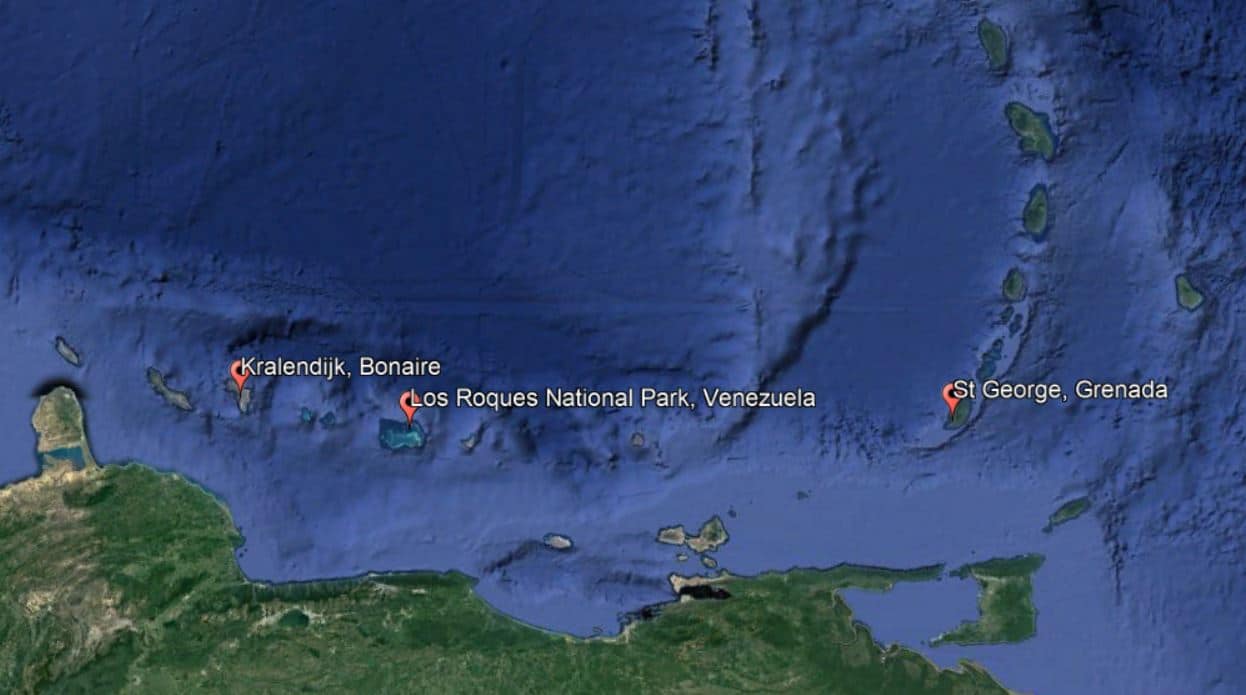
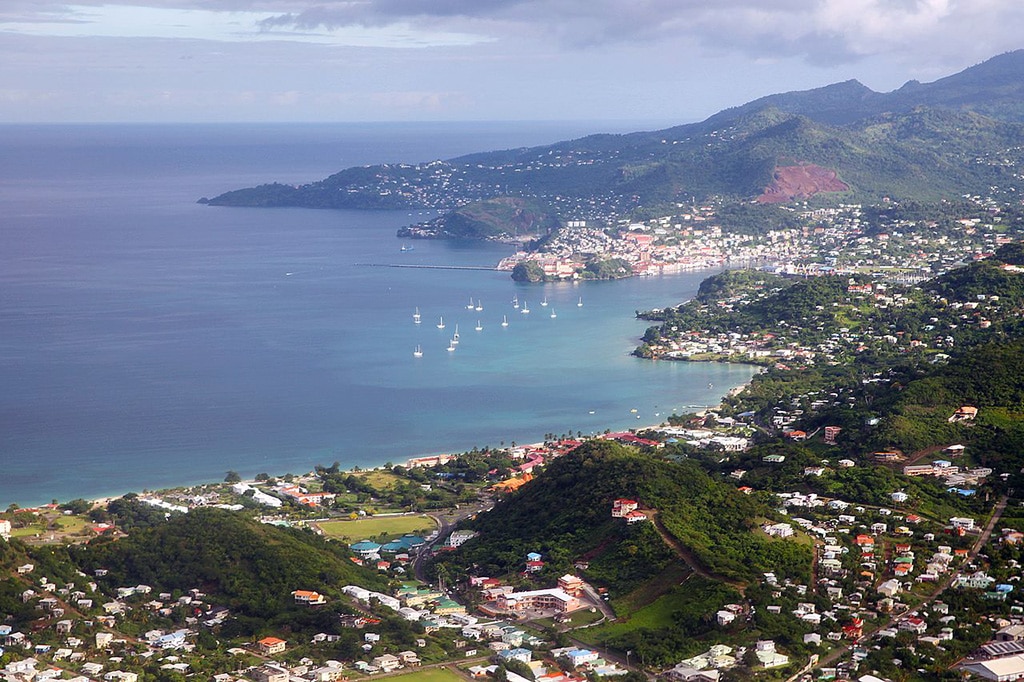
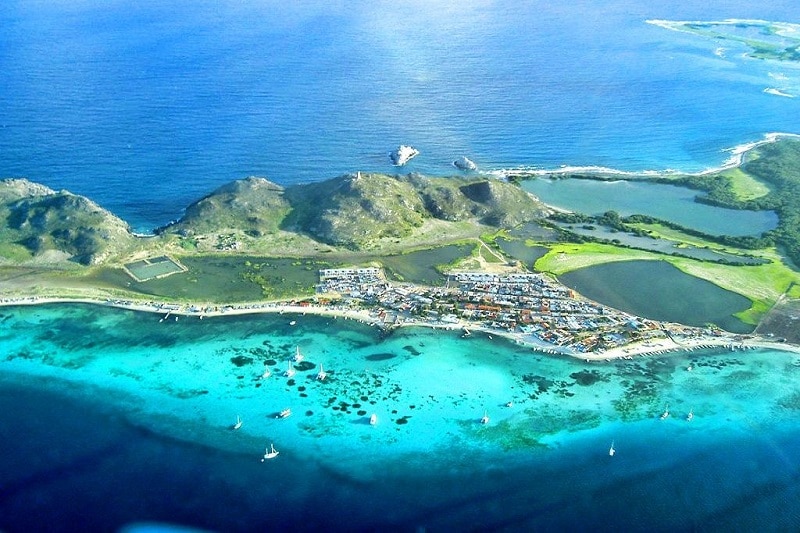
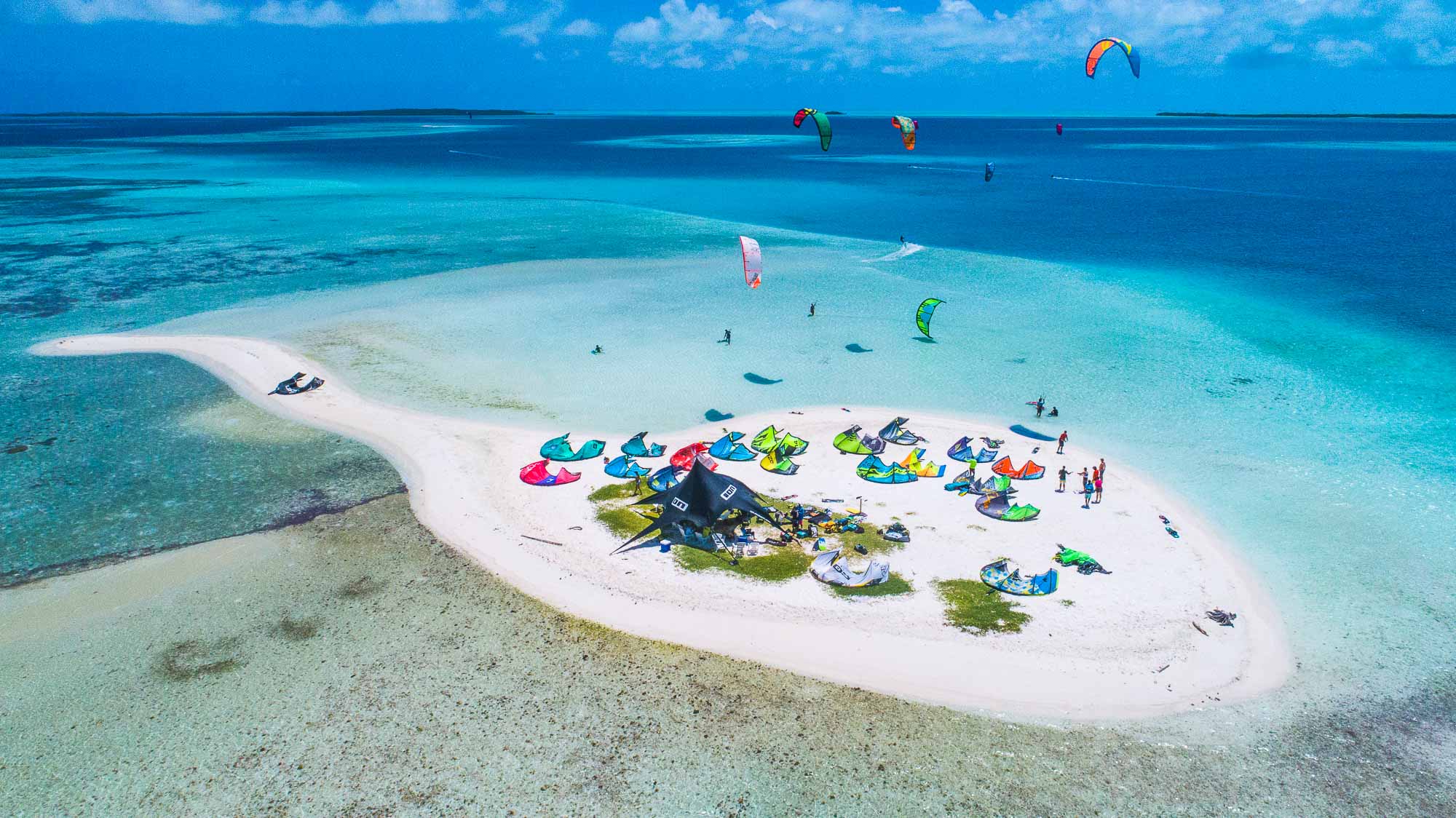
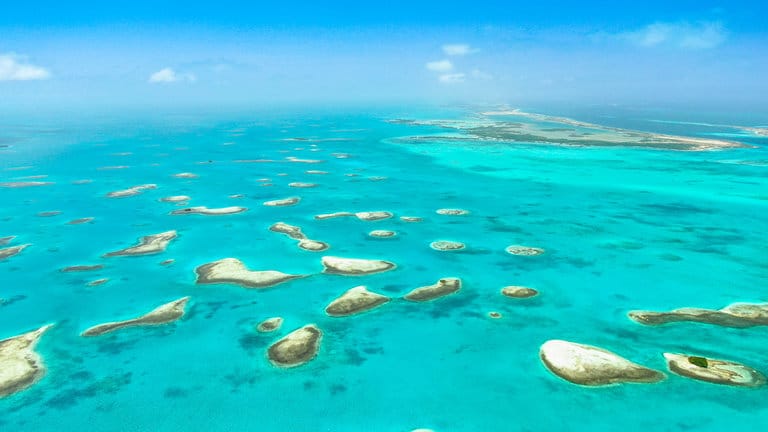
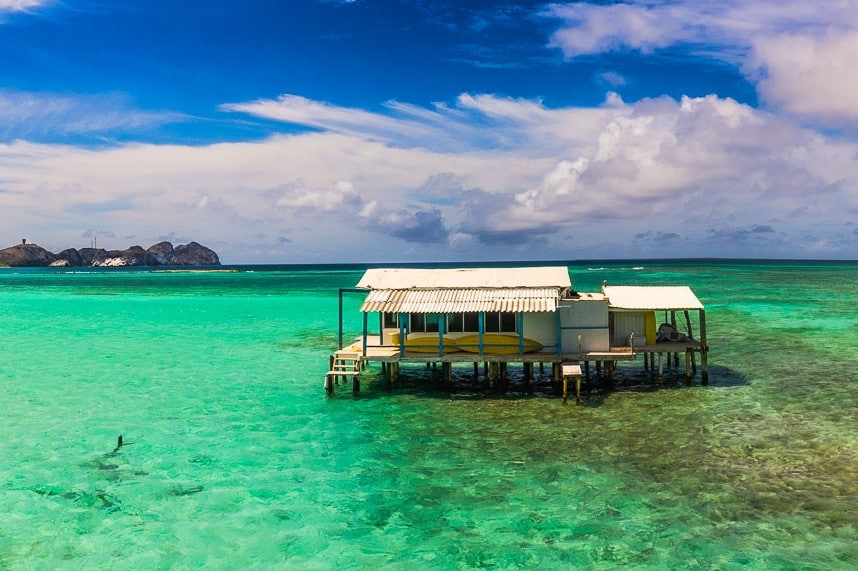
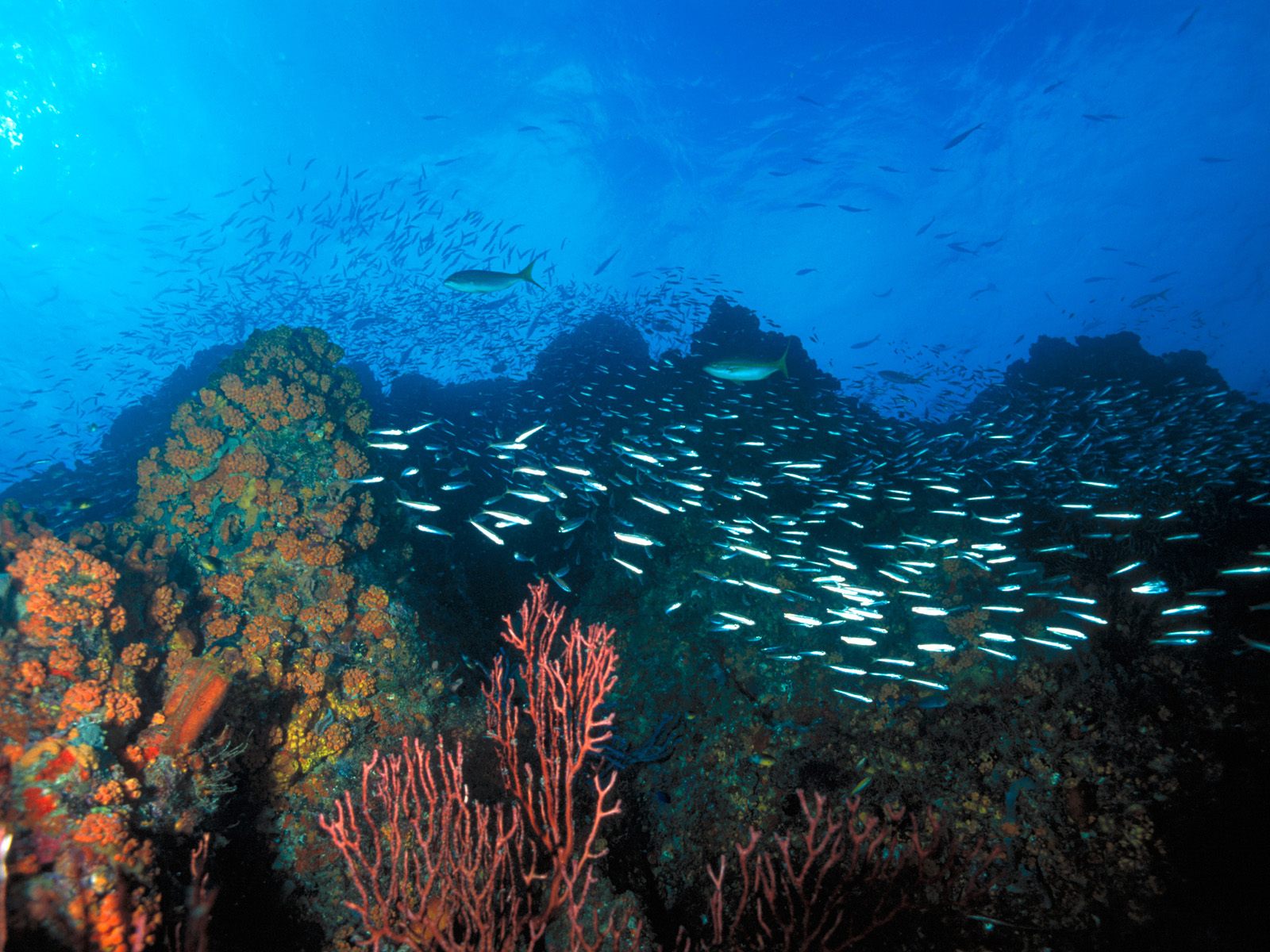
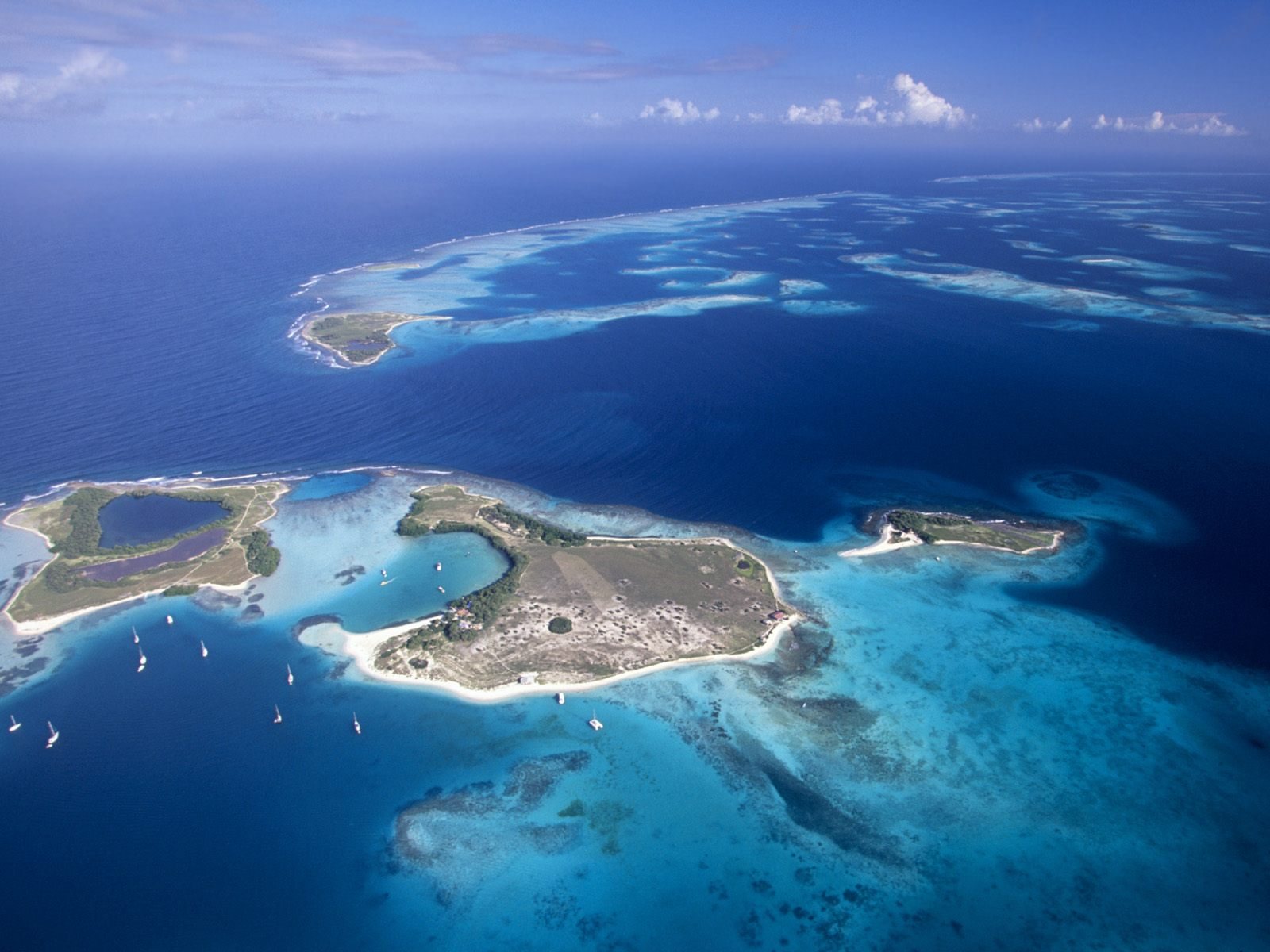

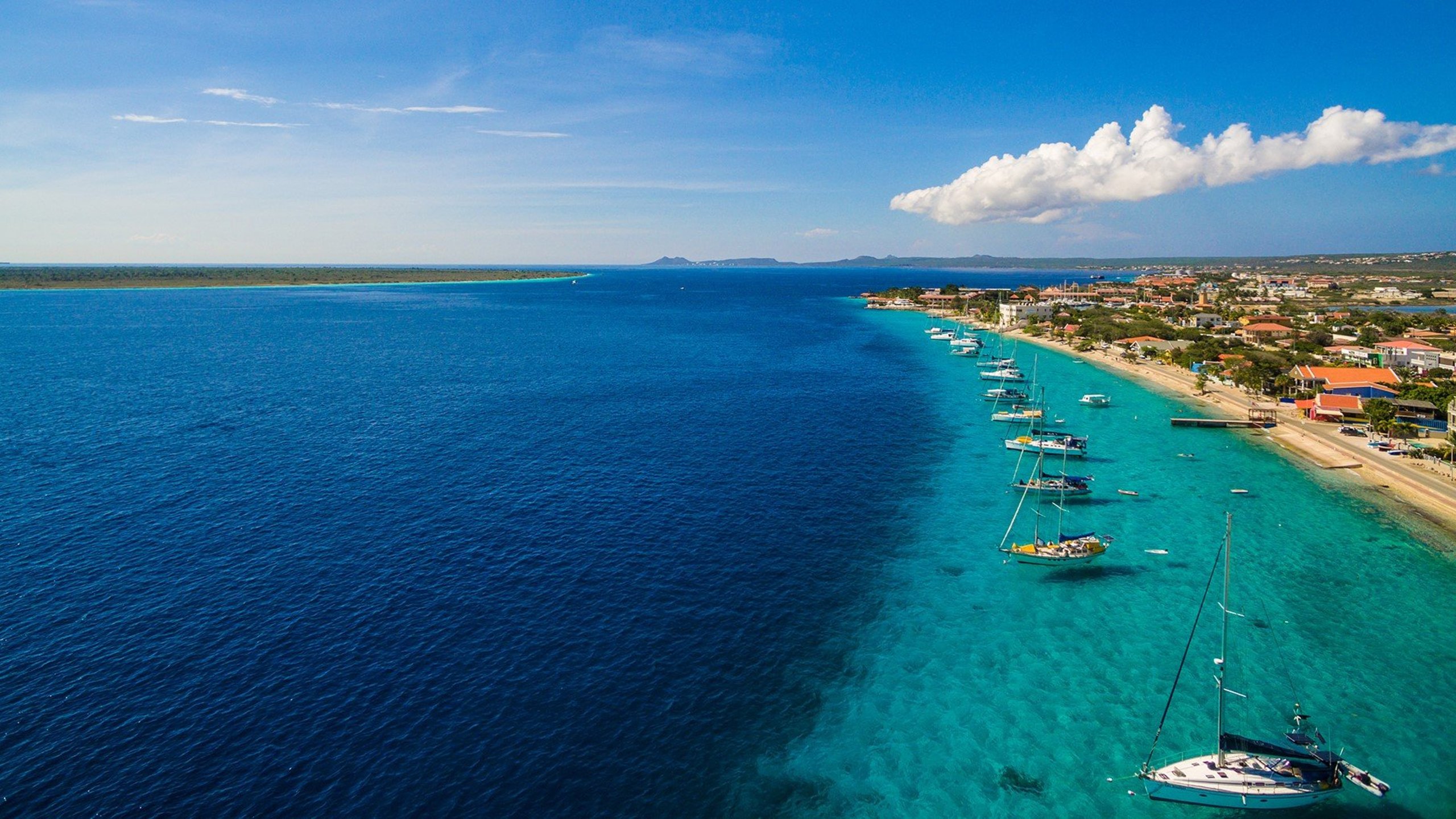
Get Your Bearings
Our 14 night voyage departing in late April 2022 will take us from Grenada to Bonaire with a weeklong stopover along the way to explore the incredible Los Roques Archipelago National Park, which belongs to Venezuela and is the largest marine park in the Caribbean.
Our itinerary during a voyage is very much influenced by the weather and conditions. With our arrival date at our final destination in mind, we’ll rely on weather forecasting to determine our optimal departure date and how long we’ll stay in Los Roques before completing our journey to Bonaire. Our initial passage of about 300 nautical miles from Grenada to the island of Gran Roque will take around 45 hours, so we’ll get to enjoy the wonder of sailing under the cover of darkness and a sea of stars! Prevailing and consistent weather during this time of year virtually assure that we’ll have fast and smooth sailing with the trade winds and currents behind us the entire way.

St. George's, Grenada
Voyage crew will fly into Maurice Bishop International Airport on Grenada to embark on Neverland. Depending on the weather forecast, we’ll spend some nights in Grenada to finalize our departure planning and enjoy many of the land and water activities that Grenada offers. We may visit the historic town and fort of St. George’s, snorkel or dive the underwater sculpture park at Moliniere Point, or hike to one of the many waterfalls on the island.

Los Roques National Park, Venezuela
Located about 100 miles offshore and north of Caracas, the Los Roques National Park & Archipelago is an area of outstanding natural beauty and enormous ecological diversity. The archipelago consists of around 350 islands, cays, and islets and covers an area of several hundred square miles. Its pristine coral reefs, wealth of bird and marine life, beautiful white sand beaches and transparent, warm, blue-green waters make it a paradise for scuba diving, kite and windsurfing, sailing and fishing.
The climate is warm and dry, with an average air and sea temperature of 81F and less than a half inch of rain per month at this time of year. Clear skies prevail and the sun is intense, but the heat is tempered thanks to the constantly blowing trade winds.
The archipelago is sparsely populated, having about 1,500 permanent inhabitants who are concentrated mainly on the island of Gran Roque and to a lesser extent its adjacent islets. There are a number of tourism operators catering to mostly Venezuelan and European visitors—this should be a great place to try kite surfing!
Gran Roque
After our passage from Grenada, we’ll make landfall at Gran Roque, which is the main island and population center of Los Roques and exudes a distinct Caribbean feel. The sandy streets of the fishing village are lined with single-story, brightly painted concrete houses and the waterfront is packed with fishing boats and visiting yachts all covered by a vast army of pelicans. We’ll go ashore and make our rounds to the offices of the health authorities, harbor patrol and coast guard, customs and immigration, and park rangers in order to clear through our entry formalities—sure to be its own little adventure!
Unlike the other islands, which are sandy and flat, Gran Roque has several massive rocky humps along its northwestern coast cliffs that plunge vertically into the sea. We can climb the hill crowned with an old lighthouse, known as the Faro Holandés, for sweeping views over the village, islands, coral reefs and the crystal-clear turquoise sea. Gran Roque is also where we’ll make any arrangements with local scuba or kite surfing operators if we decide to have the locals show us some secrets.
Francisqui
Francisqui is home to a kite surfing school and also has some amazing beaches for relaxing. We can hike to a natural pool and snorkel in the aquarium full of fish and try to find an underwater statue of the Virgin Mary. This island has a restaurant that sometimes serves lobsters fresh out of the sea, and an open-air bar where we can relax with a refreshing cocktail.
Madrisqui & Cayo Pirata
White sandy expanses outline the shores of Madrisqui, where we can swim and splash around in the crystal clear water and can walk out quite far before it gets deeper. It’s one of the few islands in Los Roques with trees providing shade, and there is a fishing village on Cayo Pirata which is connected to Madrisqui by a sliver of a sand bar. We can enjoy the local cafes with delicious and cheap seafood.
Noronqui
Despite its small size, Noronqui offers paradise-seekers a great deal to be pleased about. The white, sandy beach generally remains low-key and uncrowded thanks to its further distance from Gran Roque. The lack of crowds allows the marine life to remain abundant, so if we go snorkeling or diving, we’ll come face-to-face with countless tropical fish and sea turtles gliding by.
Crasqui
Crasqui is part of the designated national park and offers smooth white sand and crystal clear water. We can snorkel or dive many of the sites full of coral, starfish, rays, and other colorful fish species, or soak up some sun on the milky white sands. Later we can indulge in fresh seafood in the rustic beachfront restaurant, explore the nooks and crannies of the island, or try to spot sea turtles, pelicans, and large seashells.
Cayo Carenero
Working our way west through Los Roques, we’ll make a stop at Cayo Carenero which attracts many visitors for its sport fishing and seemingly infinite white sand beach lining a shallow lagoon. We can check out the island’s simple restaurant—arguably the main attraction here—where we can try fresh fish and lobsters caught by local anglers. With half of the walls and all the furniture painted blue, and decorative strings of white fish bones hanging from the ceiling, the eatery blends with its natural surroundings. If we take a longer walk along the shore, we might stumble upon wooden crosses marking the place of a shipwreck.
Cayo Dos Mosquises
We can help raise sea turtles while learning about conservation at Dos Mosquises islands. The Marine Biology Research Station managed by the Los Roques Scientific Foundation hatches and raises sea turtles from two different endangered species and keeps track of animals that deliver their young in deep waters. We can engage with the conservationists as they explain the ins and outs of what the station tries to accomplish, and cap off our visit by adopting a turtle which will be released into the wild.
Cayo de Agua
Located in the south-western zone of the archipelago, these two islets are connected by a thin sand bar, in a territory totally immersed in nature, completely surrounded by crystal clear waters. If we’re lucky we might see some of the mischievous dolphins which frequent this virgin beach. Cayo de Agua will be our last stop in Los Roques before making our final passage of ~100 miles west to Bonaire.

Kralendijk, Bonaire
We’ll end our voyage off the shores of Kralendijk, which is Dutch for “coral reef” and is the capital of Bonaire. We’ll aim to arrive in Kralendijk at least 2-3 nights before our crews’ departing flights so that we all have time to relax and enjoy some of Bonaire’s incredible diving or other activities. You can learn more about this destination on our Bonaire page.
After celebrating the conclusion of our adventurous voyage together, crew will depart from Bonaire International Airport, just south of Kralendijk.

Joining This Voyage
The all-inclusive rates to join our crew for this 14 night voyage are $3,000 for one person in a private queen cabin, or $5,500 for two people sharing a queen cabin.
We’ll work with you and the rest of the crew to optimize crew flight schedules for arrival in Grenada in late April 2022 and departure from Bonaire in early May 2022.
Please check out our Voyage Crew page for additional information about this experience.
EXPLORE
Have a play around on this interactive map of our route to explore more places and activities available during our trip.
NEVERLAND CRUISES LLC
+1.305.912.SAIL
SAIL@NEVERLAND.CRUISES
SOCIAL
CONTACT
Send us a message below with thoughts or questions. Visit the contact page to inquire about a trip on Neverland.


